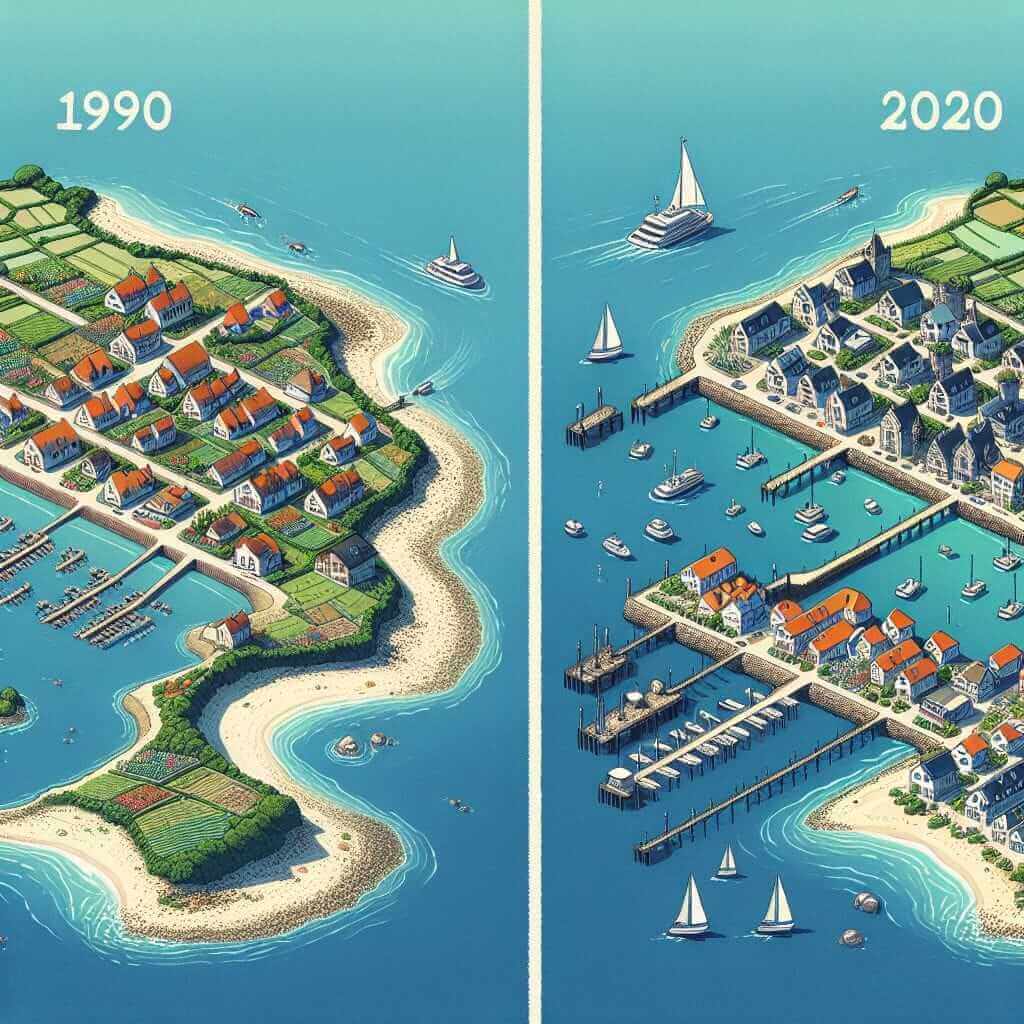As an IELTS instructor with over two decades of experience, I often find students grappling with the appropriate tense to use when describing maps in IELTS Writing Task 1. This seemingly simple task can become a point of confusion. Fear not, for this guide will equip you with the knowledge and strategies to conquer this aspect of the IELTS exam.
Understanding the Importance of Tense in Map Description
In the IELTS Writing Task 1 map description, using the correct tenses is not just about grammatical accuracy; it’s about effectively conveying the changes and state of the map. The examiner assesses your ability to:
- Show change over time: Maps often illustrate transformations, and using the right tenses demonstrates your understanding of these temporal shifts.
- Describe static features: While maps highlight changes, they also present unchanging elements, requiring you to use tenses that accurately depict their permanence.
- Maintain coherence and clarity: Consistent and accurate tense usage ensures your description is easy to follow and comprehend.
Choosing the Right Tenses: A Step-by-Step Approach
Let’s break down the process of selecting the appropriate tense based on the map scenario:
1. Identifying the Time Frame
The first crucial step is to determine the time frame presented in the map task. This information is usually provided in the task prompt itself. Look for phrases like:
- “The maps below show the town of…” (This indicates two or more maps showing different time periods.)
- “The diagram illustrates the proposed changes to…” (This indicates a plan for the future.)
2. Applying the Tense Rules
Once you’ve established the time frame, apply these general rules:
- Past Simple: Used to describe changes that happened in the past and are now complete.
- Example: The old market was demolished to make way for a shopping mall.
- Present Perfect: Used to describe changes that started in the past and continue to the present.
- Example: The residential area has expanded significantly over the last two decades.
- Future Simple: Used to describe proposed changes that will occur in the future.
- Example: A new sports complex will be built next to the park.
- Present Simple: Used to describe static features that remain unchanged throughout the time periods shown.
- Example: The river flows from north to south.
3. Analyzing an Example
Let’s examine an IELTS map task and apply our knowledge:
The two maps below show the development of a coastal village between 1990 and 2020.

Analysis: We are dealing with two past time periods, implying the use of the past simple tense to describe the changes that occurred.
Example Description:
- In 1990, the village had a small fishing harbor.
- By 2020, the harbor had been transformed into a modern marina.
- A new residential area was constructed to the south of the village.
Essential Tips for Success:
- Practice consistently: Familiarize yourself with various map types and practice writing descriptions using the appropriate tenses.
- Pay attention to details: Carefully analyze the maps to identify all changes and static elements.
- Maintain tense consistency: Avoid unnecessary shifts in tense within your description.
- Proofread carefully: After writing, double-check your work for any tense-related errors.
Conclusion
Mastering the art of tense usage in IELTS map description is an achievable goal with dedicated practice and a clear understanding of the principles outlined in this guide. Remember, effective communication is key to achieving a high score in the IELTS Writing exam. By following these strategies, you’ll be well on your way to confidently tackling any map description task that comes your way.